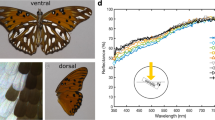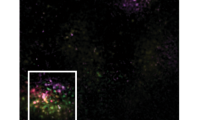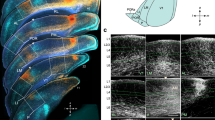Abstract
FROM Strong's1 drawings it is evident that those cells of the cortex of the feather barb which lie nearest to the surface are flattened. No author, however, has directed attention to the fact that these cells differ in structural detail from the rest of the cortical elements. The surface cells of the feather barbs appear to form a pattern similar to some of the cuticular scale patterns seen on animal hairs. It was found that this pattern could be shown by making casts of the barbs in the same way as casts of animal fibres are made.
This is a preview of subscription content, access via your institution
Access options
Subscribe to this journal
Receive 51 print issues and online access
$199.00 per year
only $3.90 per issue
Buy this article
- Purchase on Springer Link
- Instant access to full article PDF
Prices may be subject to local taxes which are calculated during checkout
Similar content being viewed by others
References
Strong, R. M., Bull. Mus. Comp. Zool. Harvard, 40, 147 (1902).
Author information
Authors and Affiliations
Rights and permissions
About this article
Cite this article
AUBER, L., APPLEYARD, H. Surface Cells of Feather Barbs. Nature 168, 736–737 (1951). https://doi.org/10.1038/168736b0
Issue Date:
DOI: https://doi.org/10.1038/168736b0
This article is cited by
-
Cortex and Medulla of Bird-Feathers
Nature (1955)
Comments
By submitting a comment you agree to abide by our Terms and Community Guidelines. If you find something abusive or that does not comply with our terms or guidelines please flag it as inappropriate.



